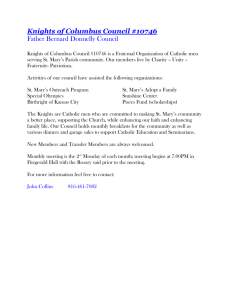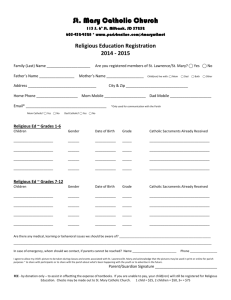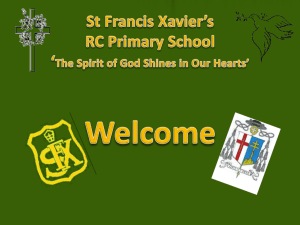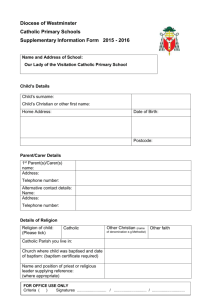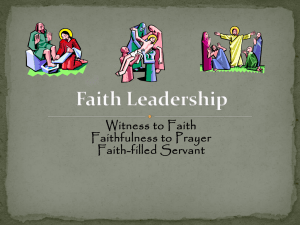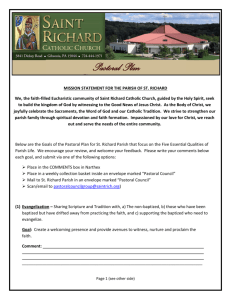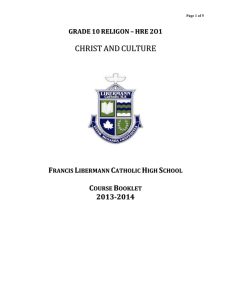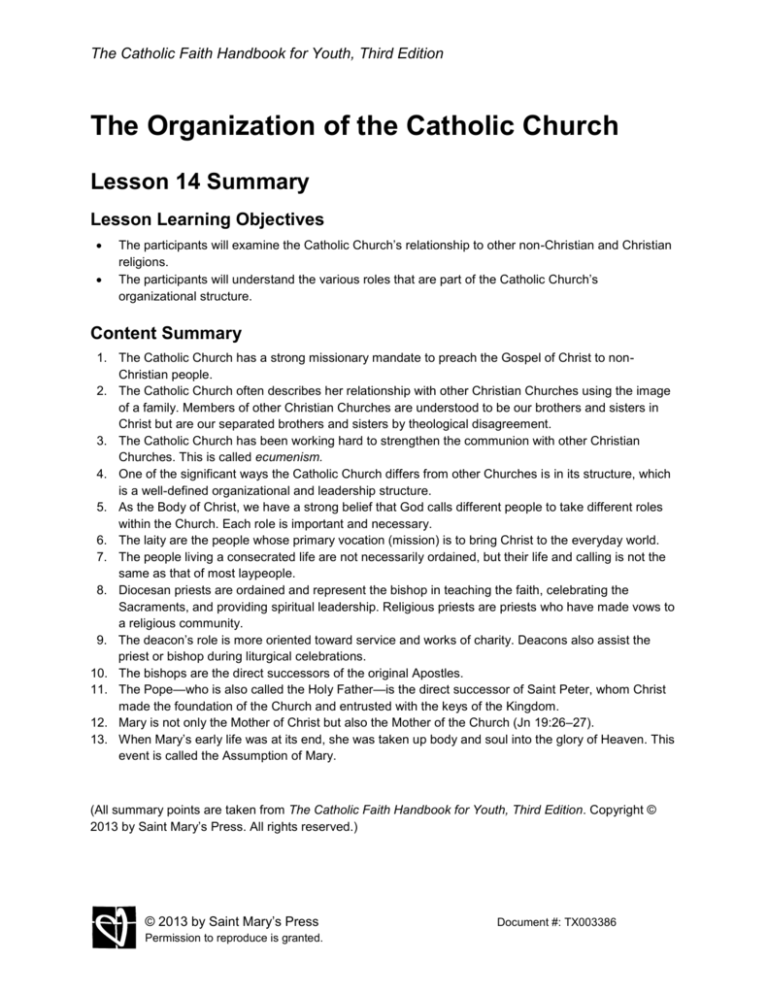
The Catholic Faith Handbook for Youth, Third Edition
The Organization of the Catholic Church
Lesson 14 Summary
Lesson Learning Objectives
The participants will examine the Catholic Church’s relationship to other non-Christian and Christian
religions.
The participants will understand the various roles that are part of the Catholic Church’s
organizational structure.
Content Summary
1. The Catholic Church has a strong missionary mandate to preach the Gospel of Christ to nonChristian people.
2. The Catholic Church often describes her relationship with other Christian Churches using the image
of a family. Members of other Christian Churches are understood to be our brothers and sisters in
Christ but are our separated brothers and sisters by theological disagreement.
3. The Catholic Church has been working hard to strengthen the communion with other Christian
Churches. This is called ecumenism.
4. One of the significant ways the Catholic Church differs from other Churches is in its structure, which
is a well-defined organizational and leadership structure.
5. As the Body of Christ, we have a strong belief that God calls different people to take different roles
within the Church. Each role is important and necessary.
6. The laity are the people whose primary vocation (mission) is to bring Christ to the everyday world.
7. The people living a consecrated life are not necessarily ordained, but their life and calling is not the
same as that of most laypeople.
8. Diocesan priests are ordained and represent the bishop in teaching the faith, celebrating the
Sacraments, and providing spiritual leadership. Religious priests are priests who have made vows to
a religious community.
9. The deacon’s role is more oriented toward service and works of charity. Deacons also assist the
priest or bishop during liturgical celebrations.
10. The bishops are the direct successors of the original Apostles.
11. The Pope—who is also called the Holy Father—is the direct successor of Saint Peter, whom Christ
made the foundation of the Church and entrusted with the keys of the Kingdom.
12. Mary is not only the Mother of Christ but also the Mother of the Church (Jn 19:26–27).
13. When Mary’s early life was at its end, she was taken up body and soul into the glory of Heaven. This
event is called the Assumption of Mary.
(All summary points are taken from The Catholic Faith Handbook for Youth, Third Edition. Copyright ©
2013 by Saint Mary’s Press. All rights reserved.)
© 2013 by Saint Mary’s Press
Permission to reproduce is granted.
Document #: TX003386


